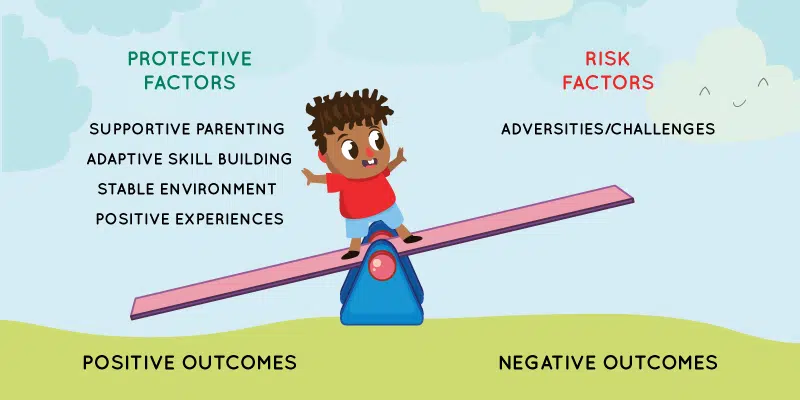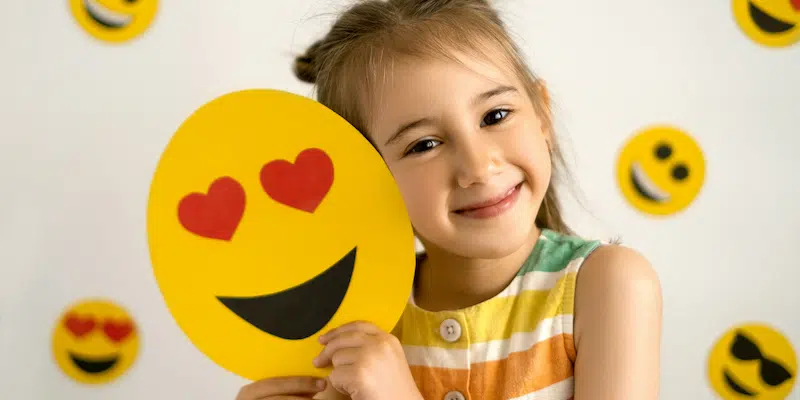The pandemic has been very tough on all of us but at the same time has brought with it some important learnings. For children & young adults especially, the most important of those I believe is the need to build and practice Resilience in their day-to-day life. The challenge for us as parents is how to help them do this.
So what is Resilience? Resilience is the capacity to rise above difficult circumstances and the ability to move forward with optimism and confidence even in the midst of adversity. It’s the ability to bounce back successfully every time. It’s a mindset! Think of how a buoy (or a float if you want to make it simpler) when pushed underwater always bounces back to the surface.
In their daily lives, children go through a lot of different stresses both at home and outside. Bullying in the playground, a favorite teacher or friend moving away, peer pressure, or just simple changes that happen as part of growing up. All of these, even if they seem minor to us, can cause serious upheaval for them.
Despite our best efforts we cannot completely shield them from these upheavals and stress, but we can teach them to be more resilient – equipping them with the right attitude and skills.
Quoting one of my favorite authors Theodore Geisel, aka Dr. Seuss, from ‘Green Eggs and Ham’
“If things start happening, don’t worry, don’t stew,
just go right along and you’ll start happening too.”
It simply means when things are not going according to the plan or they happen unexpectedly, take a moment, be sad or not, punch a pillow or two, collect yourself and get going.
We can picture resilience as a see-saw with protective experience and coping skills on one side and adversity on the other.

Children become resilient when the effect of protective factors outweighs the effect of adversities.
Paediatrician and human development expert Ken Ginsburg, MD, identified the 7C’s model of resilience in his book, ‘A Parent’s Guide to Building Resilience in Children and Teens: Giving Your Child Roots and Wings.’
Dr. Ginsburg says that children and young adults can develop resilience by learning connection, competence, confidence, character, contribution, coping, and control. All the 7C’s are intricately interwoven and are skill sets that children develop to navigate this world. He says, ‘as we raise children, our goal has to be to prepare children to be happy, healthy 35-year-olds.’
The 7C’s Model to Build Resilience
Connection
Connection is having close ties with family, friends, and community. The single most common factor for children who develop resilience is at least one stable and committed relationship with a parent, caregiver, or other adults. Strong connections lead to a stronger sense of security, belonging, and buffers children from developmental disruption. Dr. Roma Kumar, a Clinical Psychologist, with over 3 decades of experience in the field of Psychology and Mental Health, says that it’s important to develop a positive relationship between children and adults; it helps in the ability to plan, monitor, and regulate emotions. She adds, “I would always say never stop a child from crying. Crying is a very good venting mechanism. Never get upset when a child is crying. Acknowledge that you are crying. Say yes, I can understand that you feel like crying. When you are done with crying, we can talk about it. Don’t stop the child from crying; you will create more issues of the child not being able to deal with adverse situations.”
Kids who are encouraged to express their feelings develop stronger emotional bonds and are more likely to turn to their support system to seek guidance and work through adverse situations instead of seeking out alternative destructive behaviors.
This combination of supportive relationships, adaptive skill-building, and positive experiences is the foundation of resilience.
Competence
Competence is the ability to handle stressful situations effectively. When our kids come to us with problems our natural instinct is to solve the problems for them. A better strategy would be to brainstorm solutions, bounce the questions back at them, and come up with a list of pros and cons or various solutions collectively. As parents, we can help them think through the issue. Children need to be encouraged when they do something right and be given opportunities to develop specific skills. Geeta Harisinganey, Co-founder & Head of Curriculum at Sweven Montessori says, “children are intrinsically problem solvers. Once you tell them the problem, and what action needs to be taken, the kids will extend help and be a part of the solution.”
Confidence
Confidence is belief in one’s abilities and is strongly rooted in competence. We gain confidence by demonstrating competence in real-life situations. Encourage children to strive for goals that they think they can achieve but are a bit beyond their current level; praise children for not just their achievements but also appreciate them for their kindness, integrity, persistence, and fairness. It’s also important to allow children to take healthy risks and go outside of their comfort zone. This helps them gain confidence to try new things, acquire new skills, and overcome challenges.
Character
Character means having a moral compass – a strong sense of right and wrong helps constitute good character. Being altruistic, empathetic, and caring for others builds character, and that in turn helps raise our self-worth and confidence. Think of Panchtantra stories that we were taught in school in moral science class. Stories of the animal kingdom where the distinction between right and wrong was very clear and we learned about flexibility, resilience, and caring for others. Talking to children about how their behavior affects others, helping them look beyond instant satisfaction or selfish desires, and thinking of others’ needs – all build character.
Contribution
Having a mission, a sense of purpose is a powerful feeling. Being able to contribute and knowing that their contribution matters and makes the world a better place, gives children a sense of accomplishment. It can be towards the environment, volunteering work, helping someone in need, or being generous with time and energy towards a cause. All of that builds resilience. When my child feels low, I ask her what she can do to ‘fill her bucket’. This directs her energy into a thoughtful action or caring gesture towards us (her parents) or her friends. Being able to contribute in this way always works wonders and brings her back to her positive self.
Coping
Coping is the ability to handle stress effectively. Children who learn to differentiate between crisis and minor setbacks save themselves a lot of anxiety. Various activities like exercising, helping someone else, deep breathing, or cuddling with a pet offers relief and help in coping. Strategies like calming down or breaking down a problem into smaller steps help in thinking clearly and processing the situation better.
Control
Children who lack a sense of control feel like their actions don’t matter. When children make decisions that affect their lives they learn that they have control. Even small decisions like choosing what clothes to wear or what toy to play with will help them develop a sense of control. Having a sense of control over decisions and actions provides them with the ability to bounce back from life’s challenges.
We idolize childhood as being carefree but it doesn’t offer a shield against emotional turmoil, challenges, and hurt children face. Add to it the uncertainties of growing up in a complex world, and childhood is anything but carefree.
The good news is that resilience is both a personality trait and a skill. It’s like a muscle that gets stronger with practice and parents need to take a LEAD in building resilience. All children need caring adults to guide and support them and the best starting point is home. A supportive adult-child relationship is a FOUNDATION to developing resilience!
“When we tackle obstacles, we find hidden reserves of courage and resilience we did not know we had. And it is only when we are faced with failure do we realize that these resources were always there within us. We only need to find them and move on with our lives.”
Dr A.P.J. Abdul Kalam


Fabulous
What’s good for the gosselings is good for gander & goose too. Even as an adult facing adversity, these Cs can come in handy as coping mechanisms. Thank you for identifying and enunciating so clearly the guide to emotional stability. I sure will be using these tools more often.
Such a well sought after article ! Shows the immense work that went into research and writing ! The 7 C’s i feel apply to the adults too ! Love these pieces !! And Resilience is such an important attribute these days yet the focus on it is so less ! Great work !